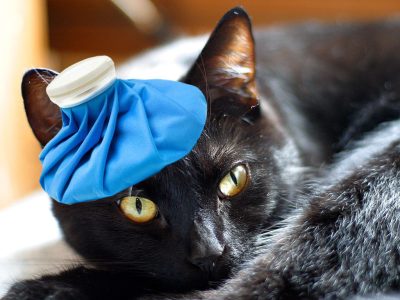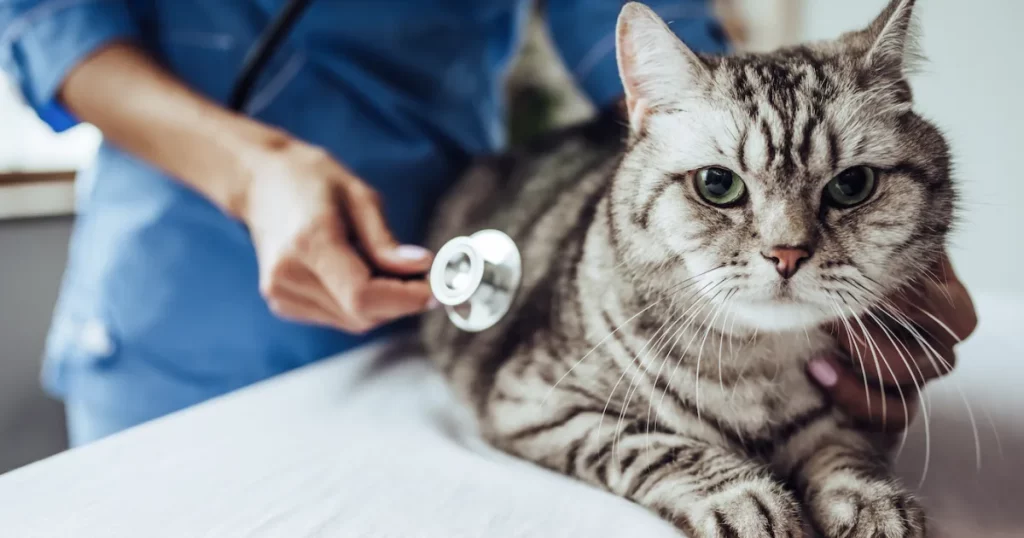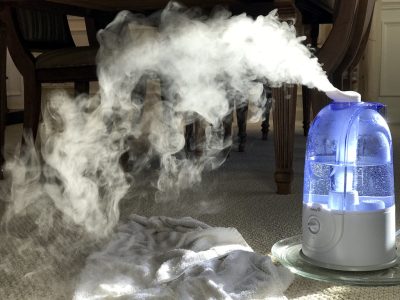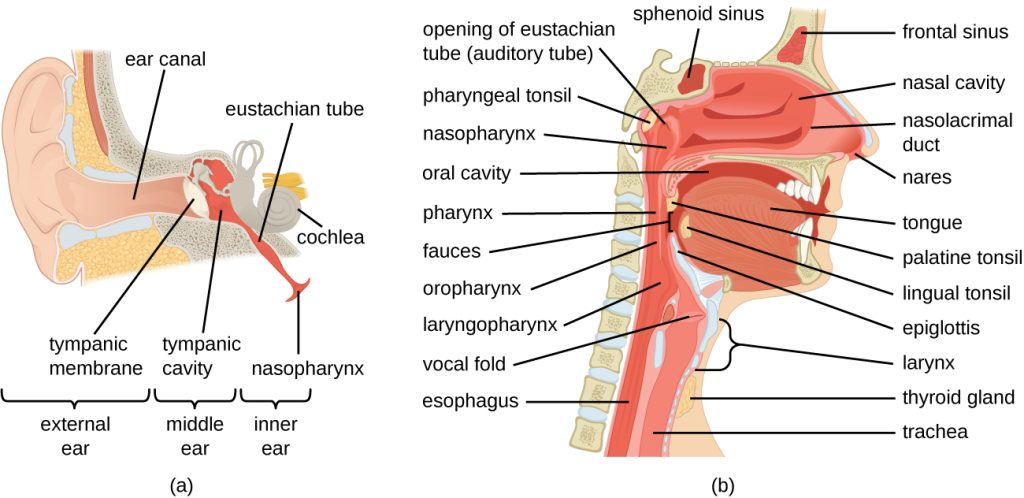Cat respiratory problems can occur in the upper and lower regions of the respiratory tract. In this post, we will look at upper respiratory infections, which occur in the nasal passages, sinuses, oral cavity, back of the oral and nasal cavity (pharynx) and the vocal folds (larynx).
A feline upper respiratory infection, a common illness in cats, looks very similar to a cold. However, it can prove much more serious. The cause for such an infection stems from one or more viral or bacterial agents.
The two most common viruses that cause such infections: 1) feline herpesvirus type-1 (also known as feline viral rhinotracheitis, or FVR), or 2) feline calicivirus (FCV). The most common bacteria causing upper respiratory infections: Bordetella bronchiseptica and Chlamydophila felis.
These two viruses, FVR and FCV, account for 90% of all feline upper respiratory infection in cats.
What Are The Symptoms?

Typically, symptoms involve the nose and throat, including sneezing, nasal congestion, conjunctivitis (inflammation of membranes that line the eyelids), and discharge from nose or eyes. The cat may also develop ulcers in the mouth. He may seem depressed or lethargic.
Other symptoms could include not eating, lethargy, fever, enlarged lymph nodes, and squinting. Sometimes there is a cough, or a clear to colored nasal and eye discharge. The cat may be gagging or drooling. If the case has become severe, the cat may have difficulty breathing.
How Does The Infection Start?
These viruses and bacteria prove highly contagious. A cat can get an infection by direct contact with another infected animal, or by exposure to environmental objects that have become contaminated by infectious secretions.
These include food and water bowls, litter boxes, toys, and bedding. As the harmful viruses and bacteria can only survive for a short time in the environment and can be easily destroyed by proper disinfection, place a strong value on cleaning soon after an infected cat has been around.
Dilute bleach solution will destroy both viruses. Use it when necessary.
How Long Will It Last?

After kitty is exposed, he will go through an incubation period of 2 to 10 days before clinical signs appear. If uncomplicated, the infection typically lasts for 7 to 10 days. In some cases, the signs may continue for up to 21 days. During this entire time, the cat can infect other cats.
A sad thing: With FVR, all cats become chronic carriers, having the disease for life, and various factors, such as stress, may reactivate the virus throughout life. In the case of FCV, about half of the cats will become carriers of the disease. This state, in a few cats, may persist for life.
How Is Such A Condition Diagnosed?
Diagnosis is usually based on characteristic clinical signs. The causing agent won’t always need discovery, unless you deal with a breeding cat or one not responding well to treatment. If caused by a virus, it can usually be identified by collecting cell samples from discharges occurring in the nose, eyes or back of throat.
If symptoms last a long time or recur, it may warrent such tests as chest or skull x-rays, blood tests, or bacteria culture plus sensitivity testing of abnormal discharge.
How Does One Treat This Condition?
If your cat has an uncomplicated upper respiratory infection, chances are you can treat kitty at home. One way to help kitty is by increasing humidification in the home. Take the cat into a steamy bathroom for 10 to 15 minutes.

Keep a humidifier running in the same room with the cat. Putting some Vicks in there may be helpful. Nose drops may help if the nasal discharge is quite severe. Wipe kitty’s face and eyes with a moist tissue to help minimize irritation.
Because the condition will cause a decreased sense of smell, the appetite may decrease as well. Serve a very smelly canned cat food that kitty likes, and you might cause an improvement. In worst-case scenarios, your vet may prescribe an appetite stimulant.
What Can You Do To Prevent Such An Infection?
Such places as boarding facilities, humane societies, animal shelters, and cat shows could expose your cat to an infectious disease. Try to prevent direct contact between your cat and other felines. If you pet another cat, wash your hands thoroughly before handling your own kitty.
You will also find standard core vaccines that will provide protection against FVR and FCV. In addition, you may find that a vaccine that protects against feline chlamdiosis (eye infection) is helpful. Your vet may recommend it if your cat has a reasonable risk to exposure.
Keeping your cat indoors lowers the risk of exposure to infected animals. If your cat does get sick, isolate kitty from other pets. Keep stress at a minimum. Make sure vaccines are up to date. See your vet regularly, to help catch and treat problems early.
Check These Reference Sources
See references below, and read the one from petmd.com that’s titled “Heavy Breathing in Cats.” Keep this information in mind: First, most causes of heavy breathing in cats are quite serious. Because cats hide illness, by the time you notice the heavy breathing, kitty may be nearing a crisis.
Never ignore heavy breathing in cats. Make an appointment and see your vet immediately, even if it’s the middle of the night. Kitty could collapse without immediate attention.
This article will list the many causes of heavy breathing in cats, and lists specific types. It’s a good reference to have handy for a guide. Check it out.
Also, read the following reference for information about both upper and lower respiratory problems. It’s from vet.cornell.edu. It includes information on a variety of specific respiratory ailments, and includes for each the following: Clinical Signs, Diagnosis, Treatment, Prognosis, and Prevention.
This writer has done a really thorough job, so you might as well check it out for more in-depth information.
Prevention And Early Treatment Important
If you think your kitty has an upper respiratory infection, it’s so important to treat it. If left untreated, it could morph into something much more serious. Find out what’s going on with kitty, and then do what you need to do to aid recovery.

Monitor kitty’s health by watching for any signs that something could be wrong. Kitty can hide things well, but his health, vitally important, must be maintained by observation and care from you and from your vet.
References I used for this post:
pets.webmd.com/cats/upper-respiratory-infection-cats vcahospitals.com/know-your-pet/feline-upper-respiratory-infection petmd.com/cat/symptoms/heavy-breathing-cats vet.cornell.edu/departments-centers-and-institutes/cornell-feline-health-center/health-information/feline-health-topics/respiratory-infections

